May 28, 2024

A long and scenic drive through the rich and fertile farmlands of the valley and the steep limestone cliffs of northern Bulgaria delivered us from our ship’s port in Ruse to our first official stop in Arbanasi. As we traveled past field after field, we noted that there were no homes or buildings situated on the land. This is because Bulgarian law prohibits using the land for anything other than its agricultural purpose as a way to protect the fertility of the land. The individuals who own these lands have homes and barns within the city and commute to their farms.


Before we arrived at Arbanasi we stopped for refreshments at an event center built to resemble the old fortresses we’ve been visiting. The most notable thing about our visit were the bird nests we found at the top of the ceilings just outside both the men and women’s restrooms. Their owners were home and very vocal but shy.
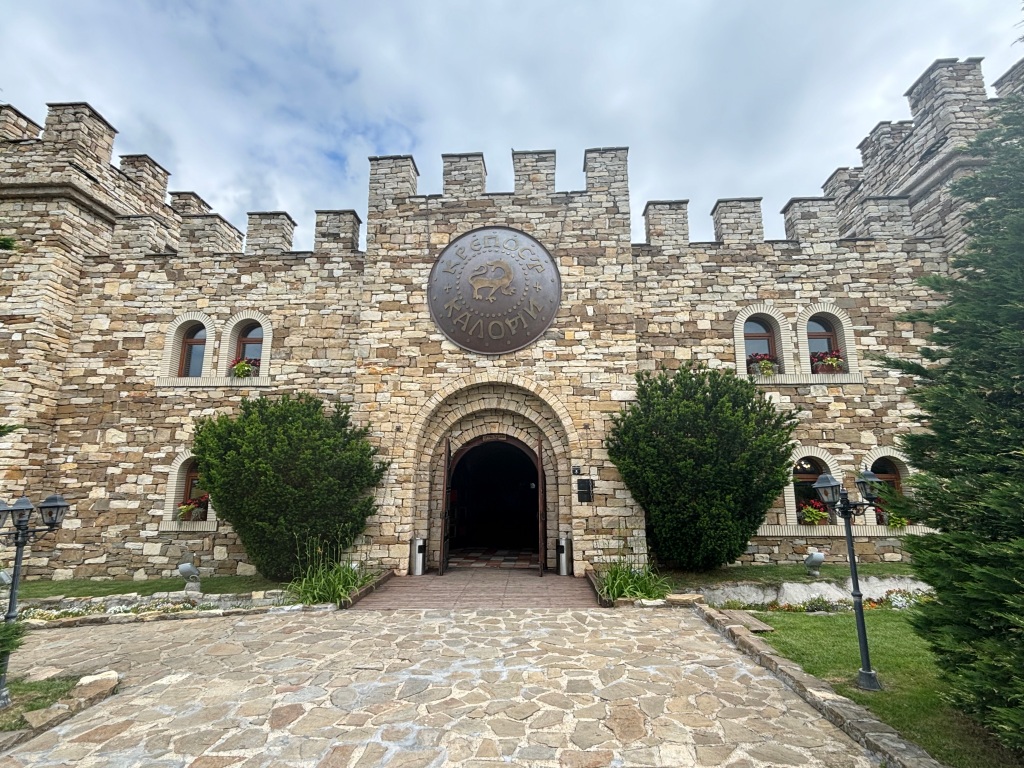


Located in central northern Bulgaria, Arbanasi (Bulgarian for “Albanian) is a city thought to have been first founded in the 13th century by Albanian merchants who, over time, became very wealthy trading their goods in nearby Transylvania. Today the city is best known for its preservation of historic monuments. We visited two of the more well-known ones – the Nativity Church and a merchant’s home that is now a museum.
The Nativity Church began as a one-room Eastern Orthodox church in 1597. At the time it was built the law said no building could be taller than the height of a rider sitting atop his horse. This explains the shortness of the building, and its doorways. Services were (and are) conducted standing up, but to accommodate those who might need a short respite during longer services very narrow seating benches were installed along the wall of one of the rooms.
Both men and women are buried in the cemetery behind the church, but it is only a select few. One had to hold a very high position within the church or be near sainthood to qualify. Flat headstones differentiate men’s graves from the women’s, which had rounded headstones.
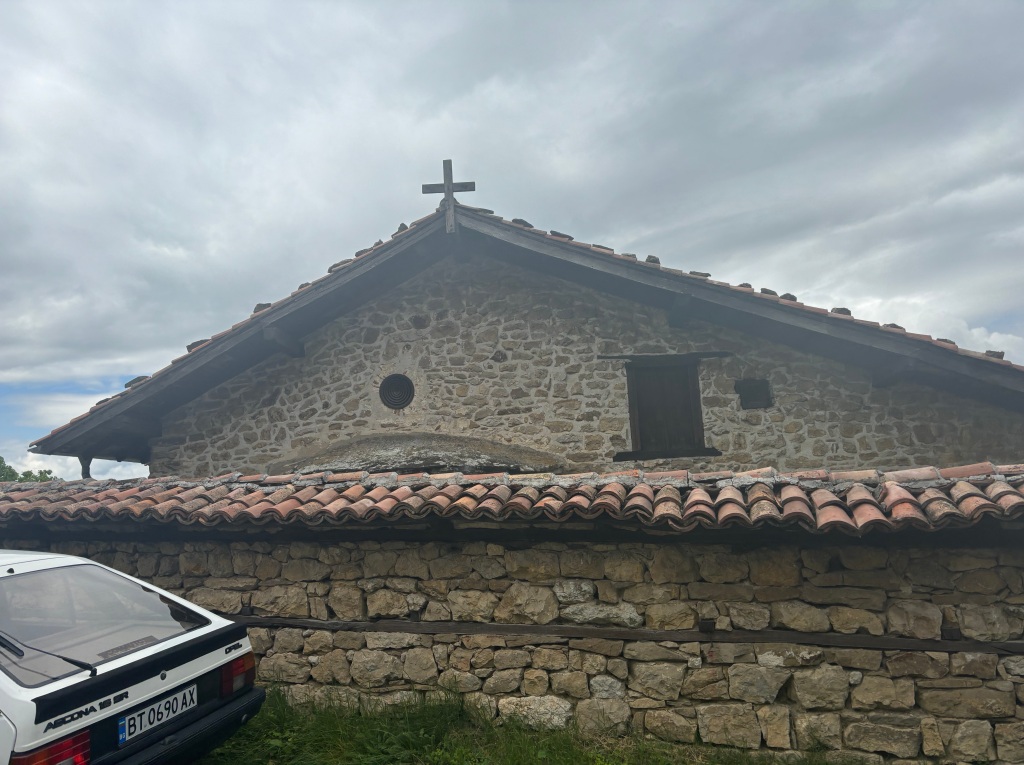
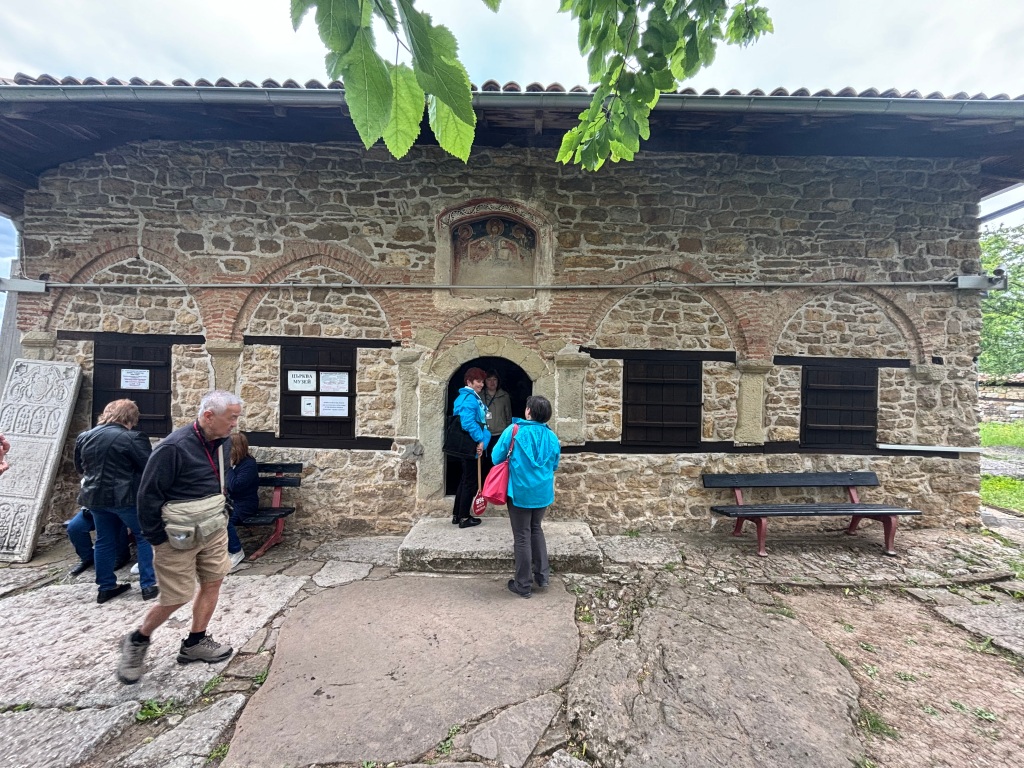
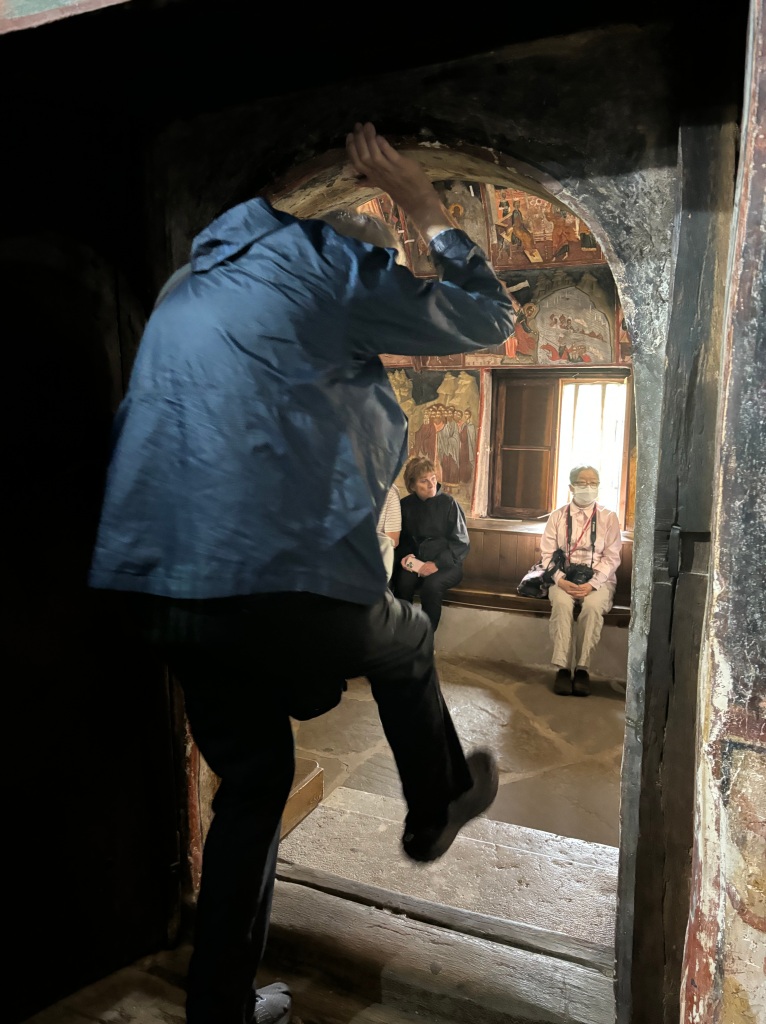
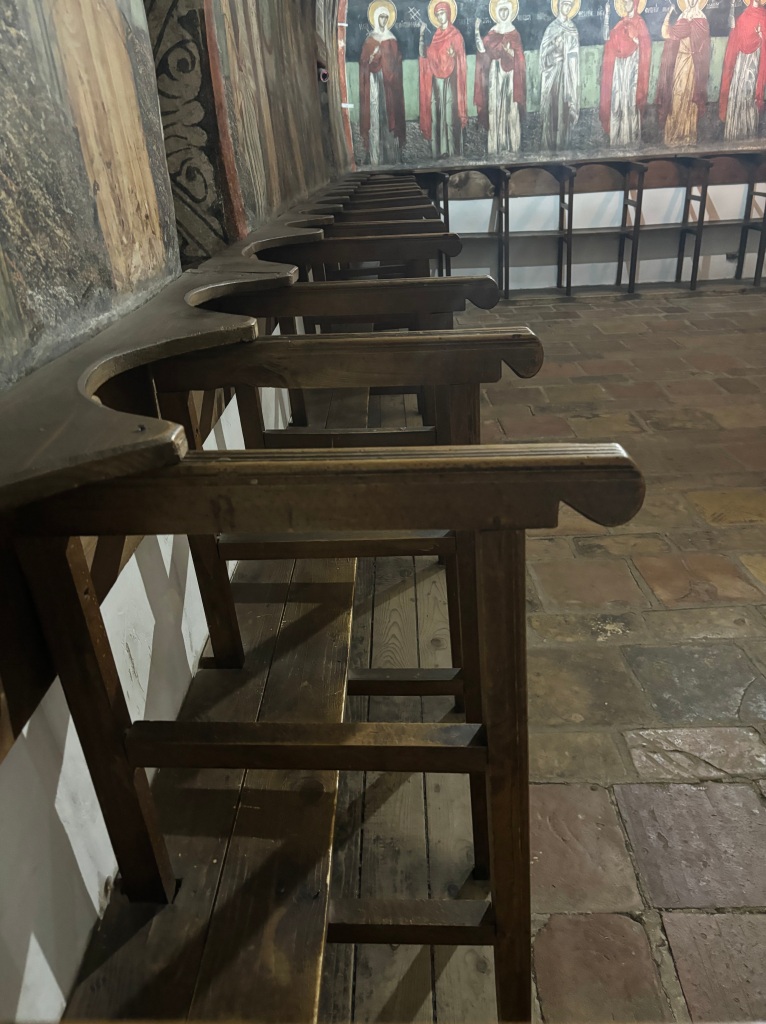

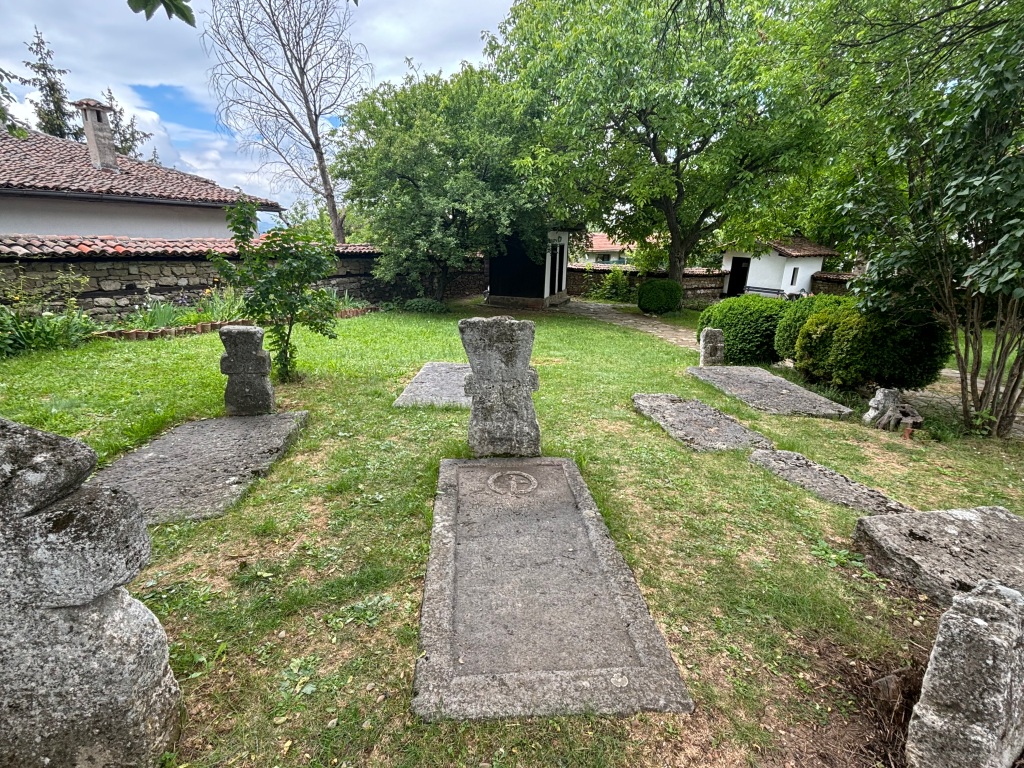
The Nativity is Arbanasi’s oldest church, and its simple exterior belies the wealth of art within. Nearly every square inch of its interior walls are covered in murals and frescos, approximately 3600 in all, dating back to the 17th century.
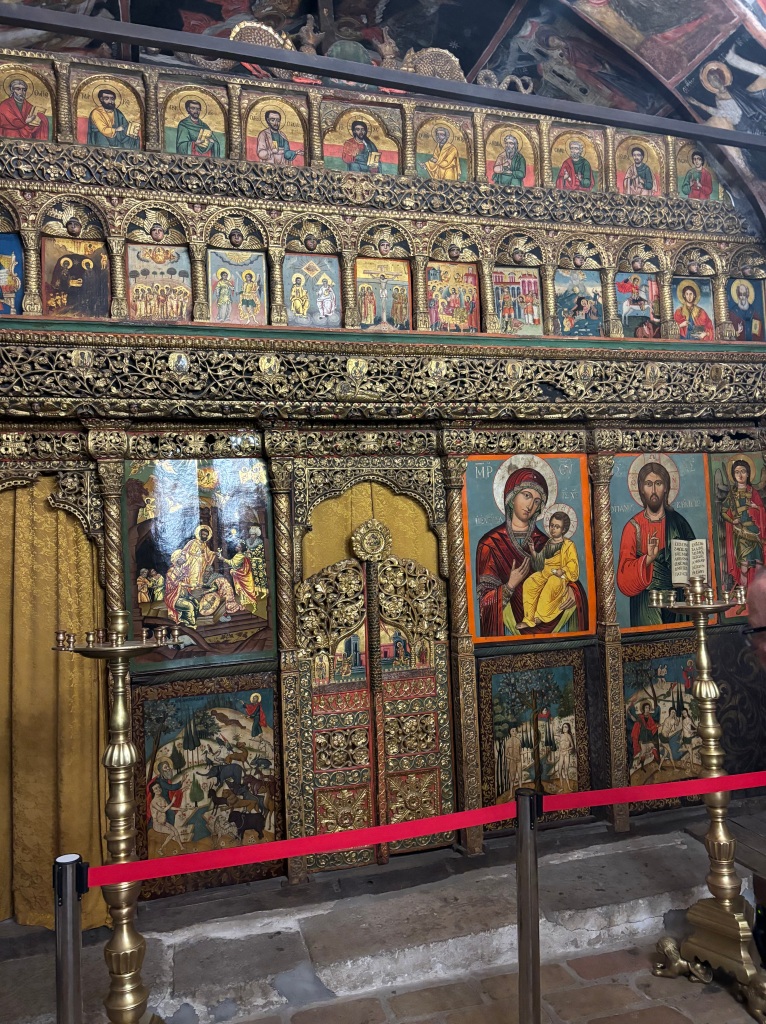

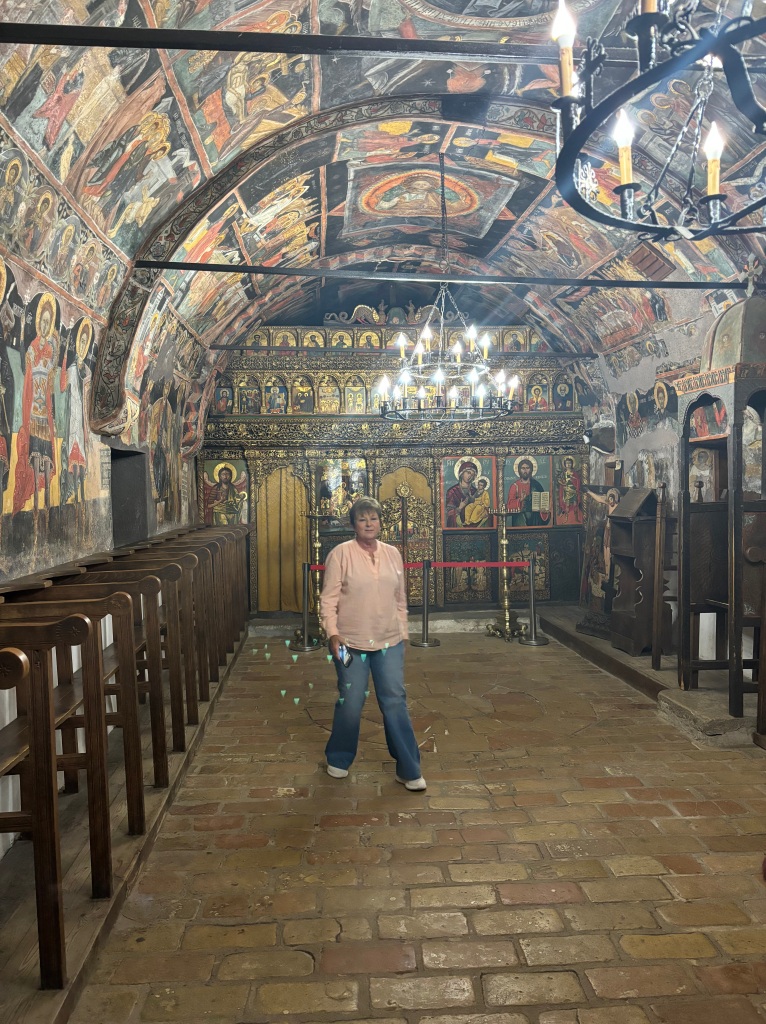
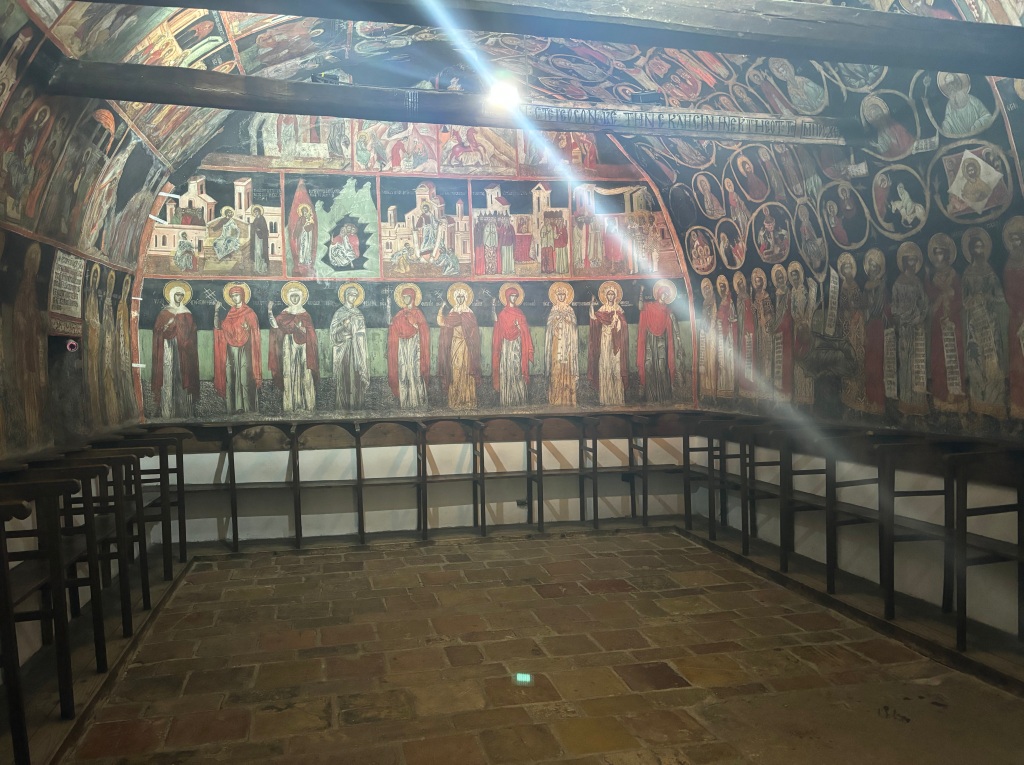
A few blocks from the church stands the Konstanzalieva’s House, a 17th century home owned by the richest family in Arbanasi at the time. It has been turned into a museum showcasing the lifestyle of rich merchants of the time.
The bottom floor of the home would have been for storage and livestock; the family would have lived in the upper stories. The first room we entered contained a bed that would have been used by the father as a sort of office, the place he would have conducted business. All business meetings of the day would have begun with a cup of tea and a sufficient amount of small talk before getting to the purpose of the call.
Next was the dining area, behind which is the kitchen, complete with a secret staircase (we couldn’t get a picture) where the family could hide in case of attack, and indoor bathrooms (that little triangle in the floor – and they had not one, but two bathrooms)! A room for newlyweds and the women’s work room was next, followed by a special room for new mothers and their infants. Because disease was so prevalent during this period and new mothers and their babies considered so fragile, they were kept separate from the rest of the family for the first 40 days after the baby was born. There’s even a space in the room to hang the baby’s laundry, because they were afraid that if they hung its garments outside “dark” forces might come in the night and steal its soul.

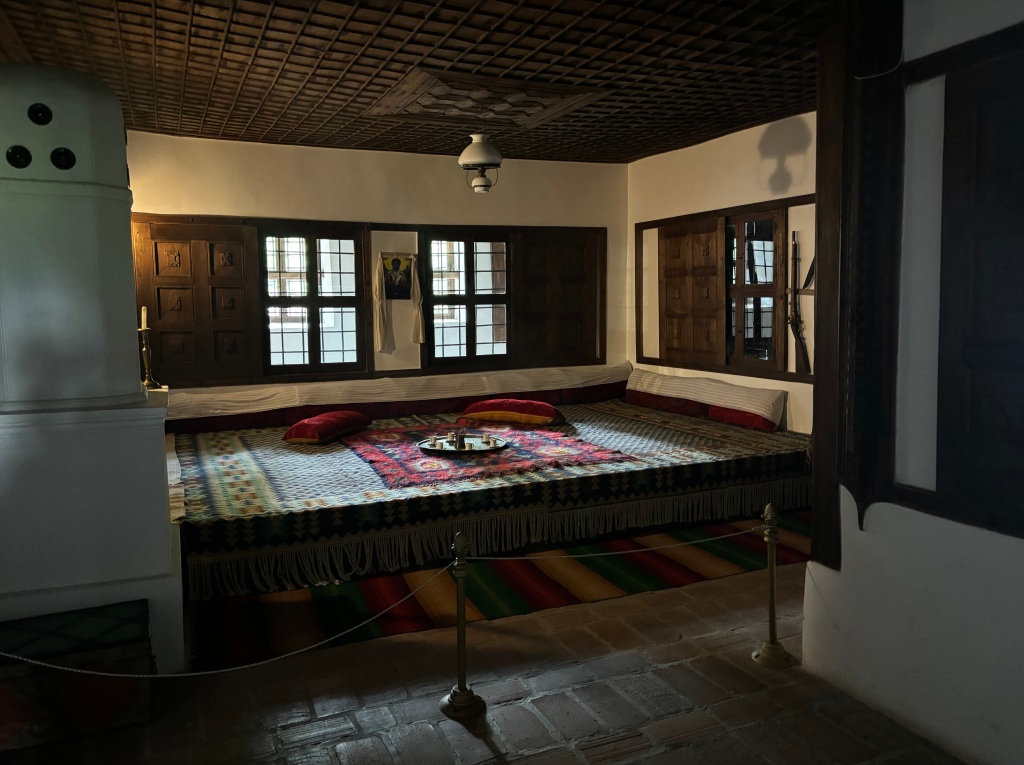
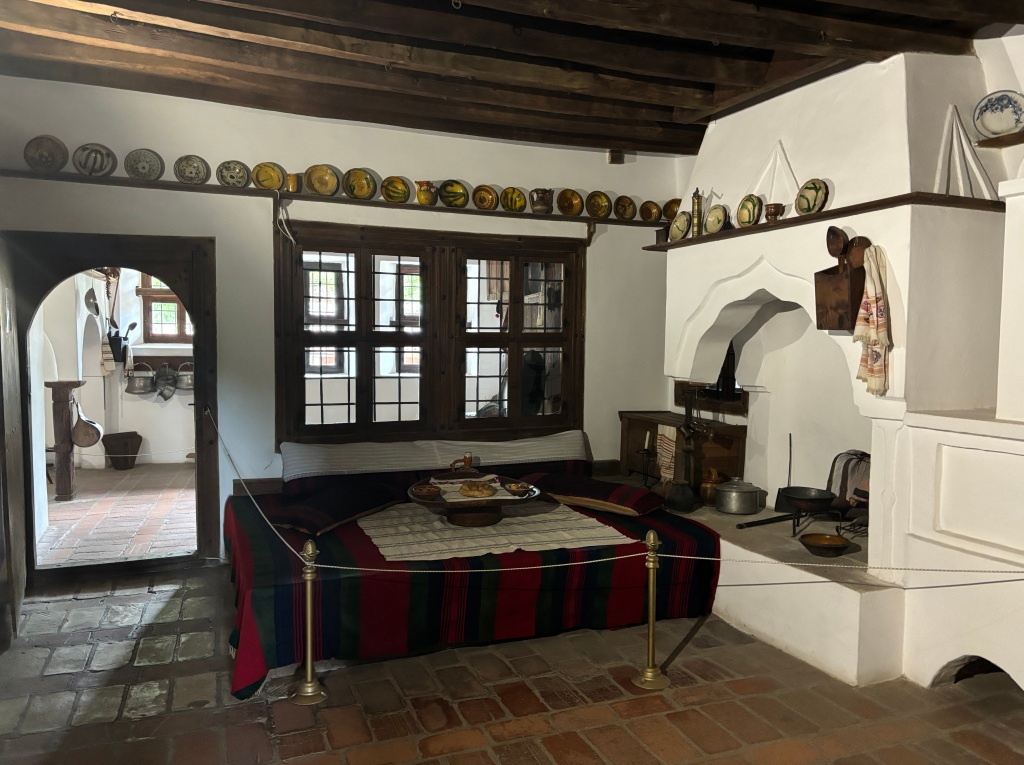

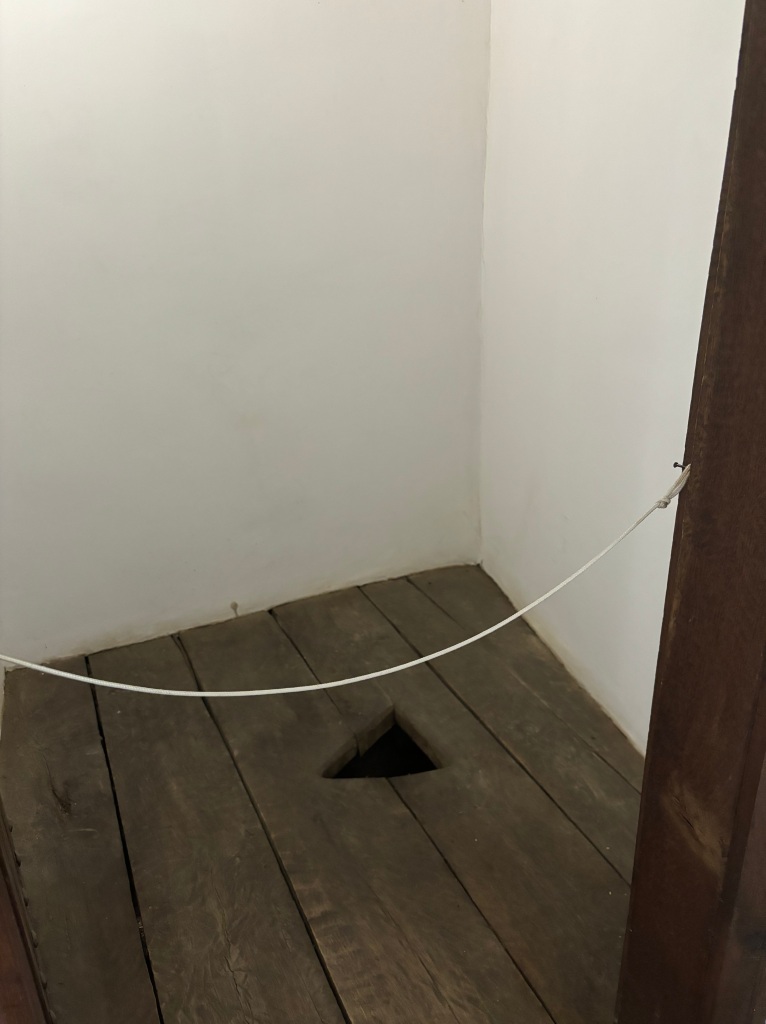

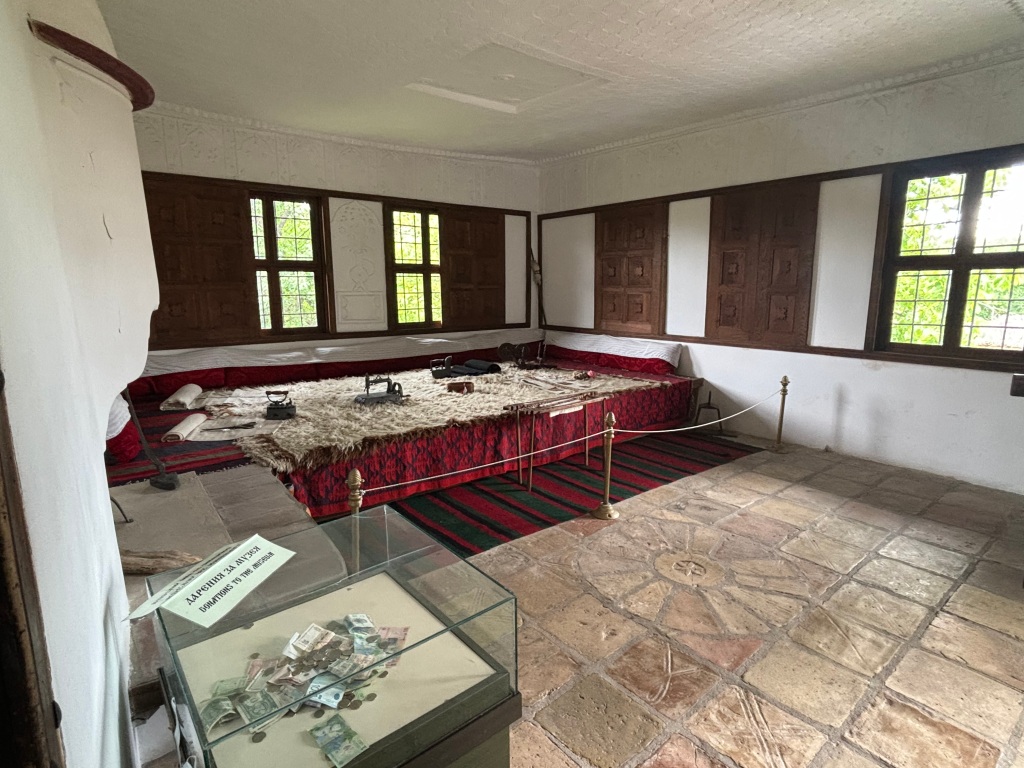

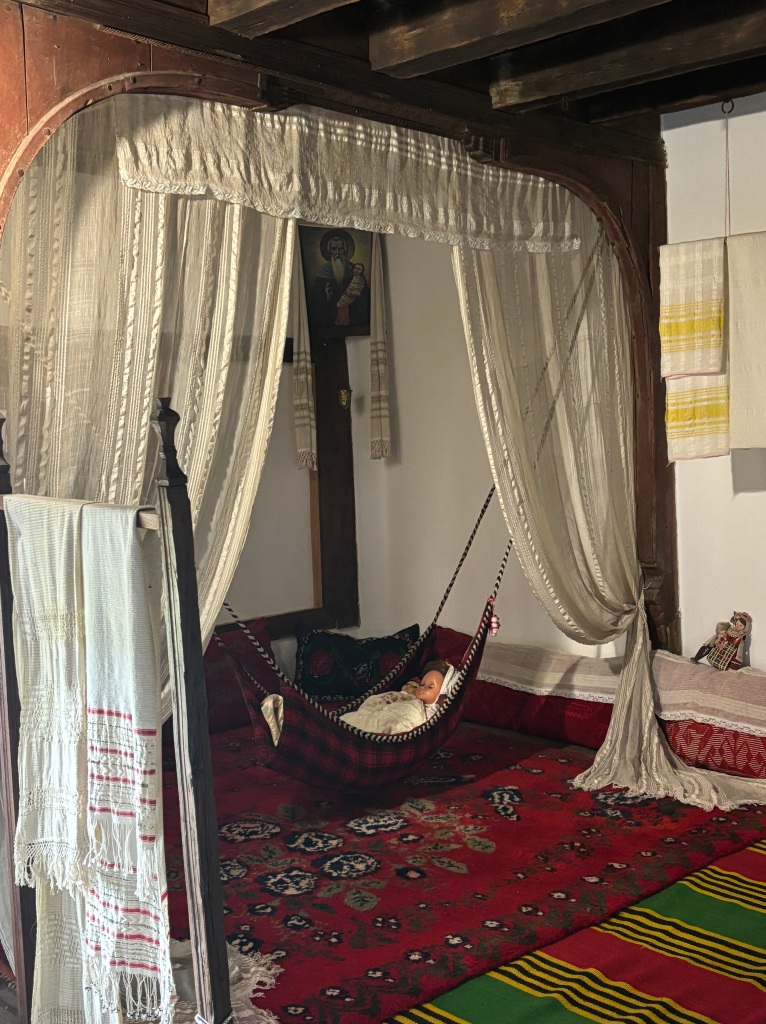
Lunch was in a very festive restaurant, complete with a little animal farm of goats, chickens, pigs and peacocks (they swear they’re just pets and not future meals). We were served a traditional meal of bread with hummus and chicken stew while traditional musicians danced around us.
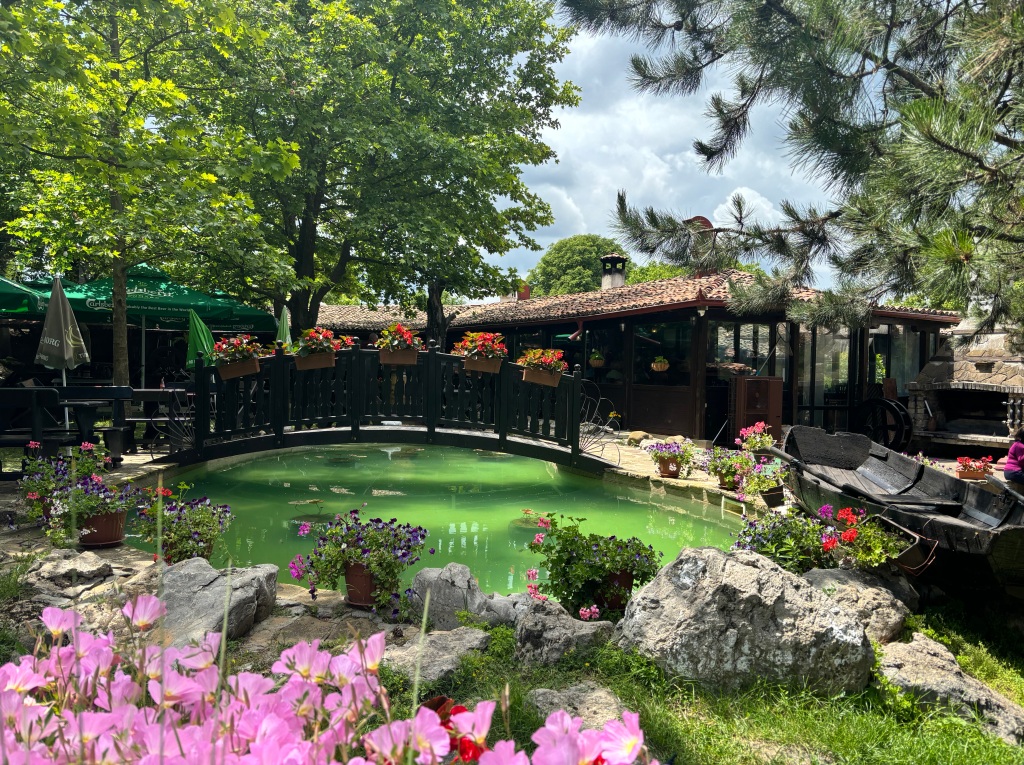
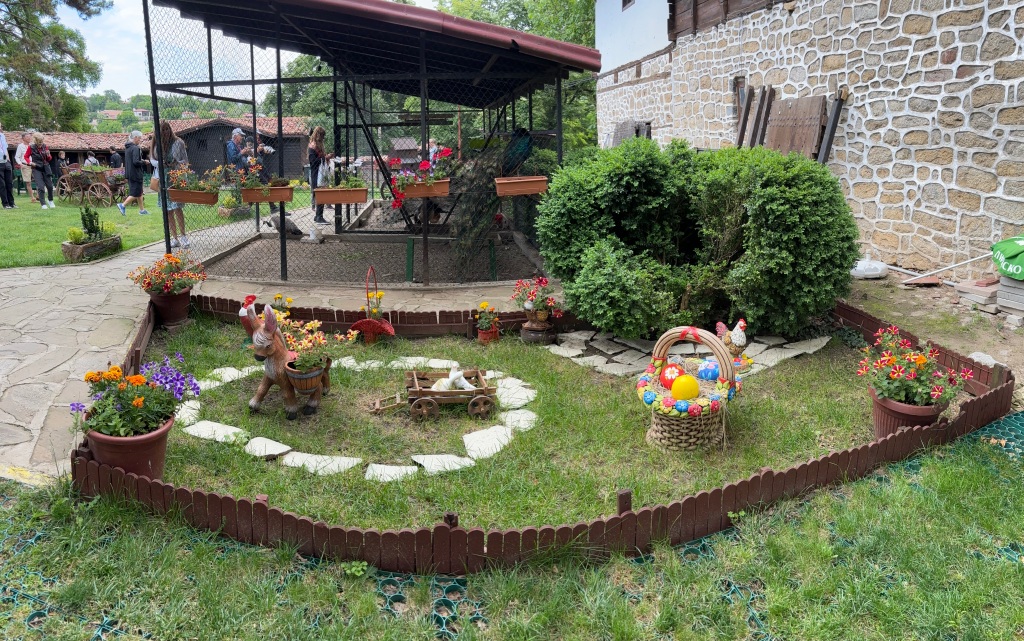
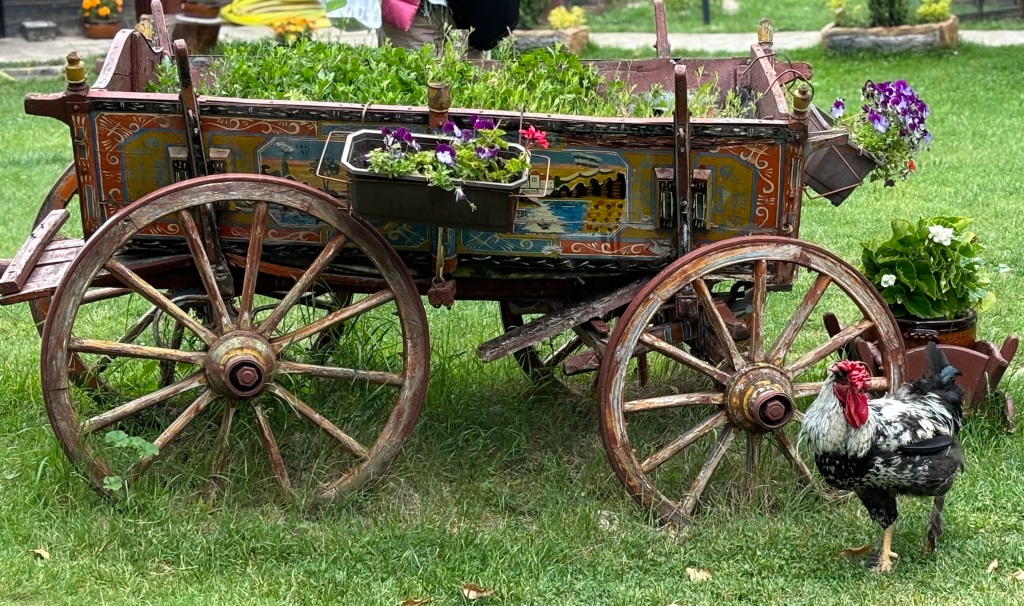
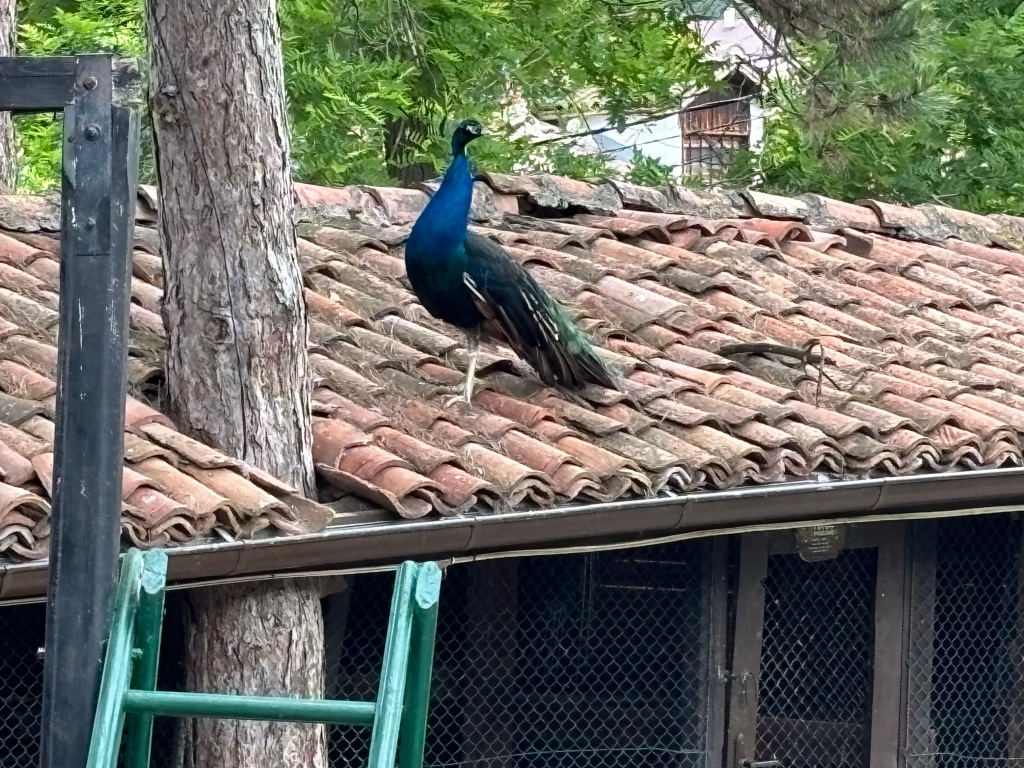
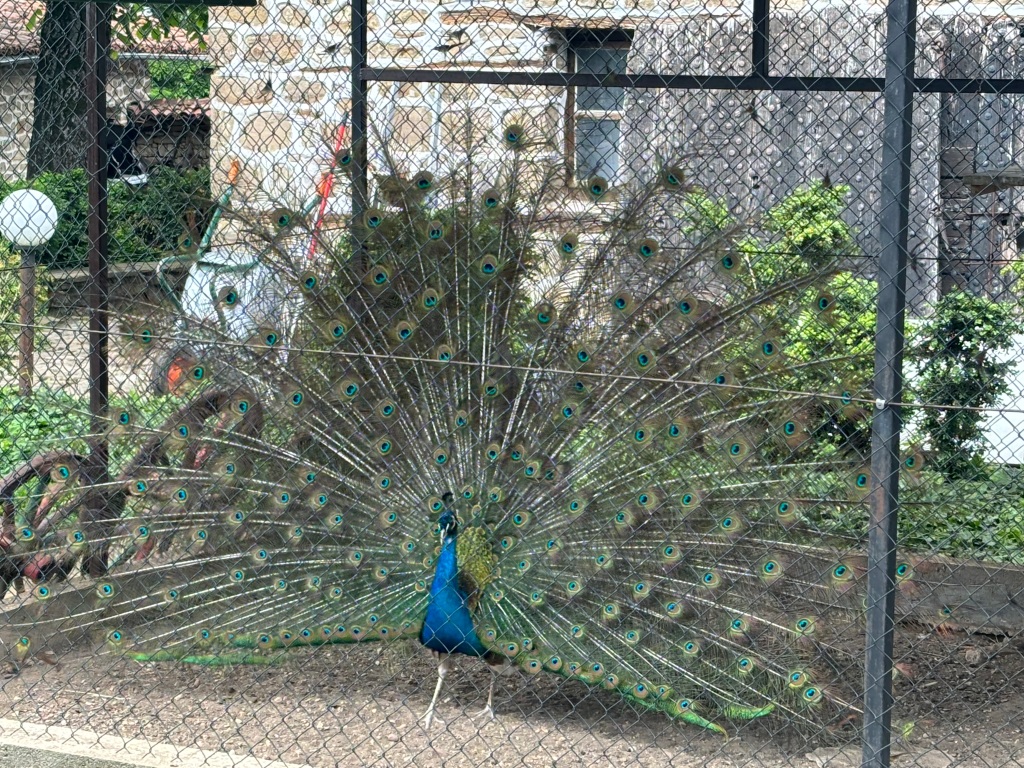


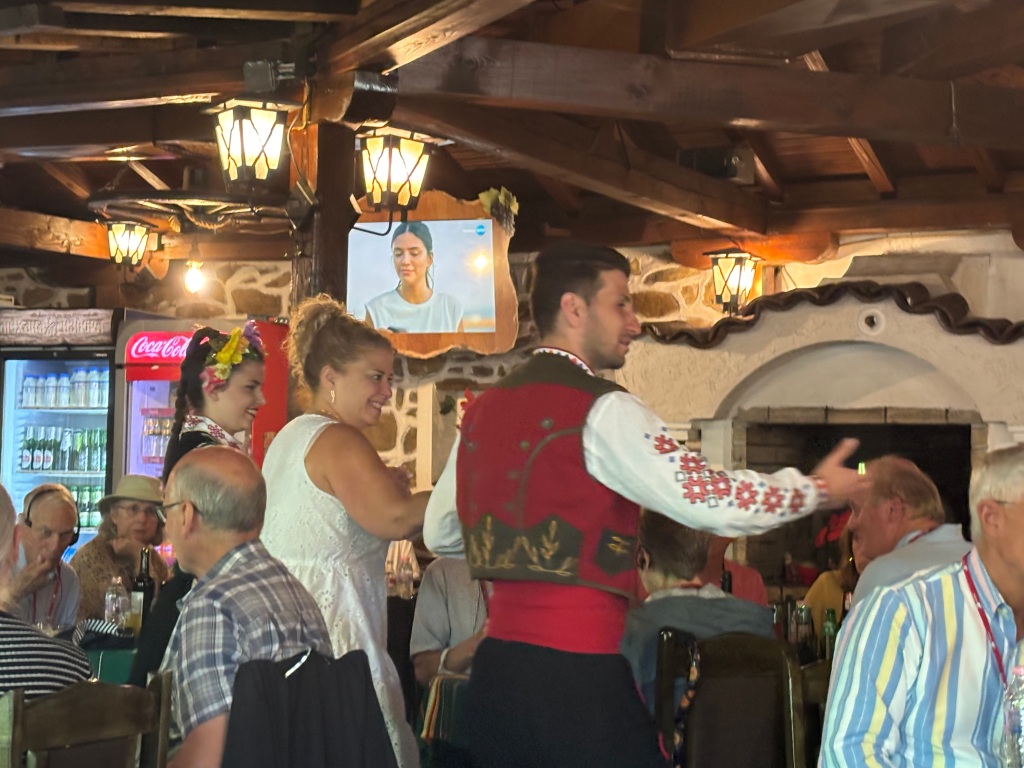

The best part of the day was saved for last – the Tsaravets Fortress in Veliko Tarnova. Built between 1185 and 1393, it was the primary fortress of the Second Bulgarian Empire. In addition to more than 500 houses and 21 churches, the fortress was home to the royals and religious leaders and is often compared to Rome and Constantinople in its significance.

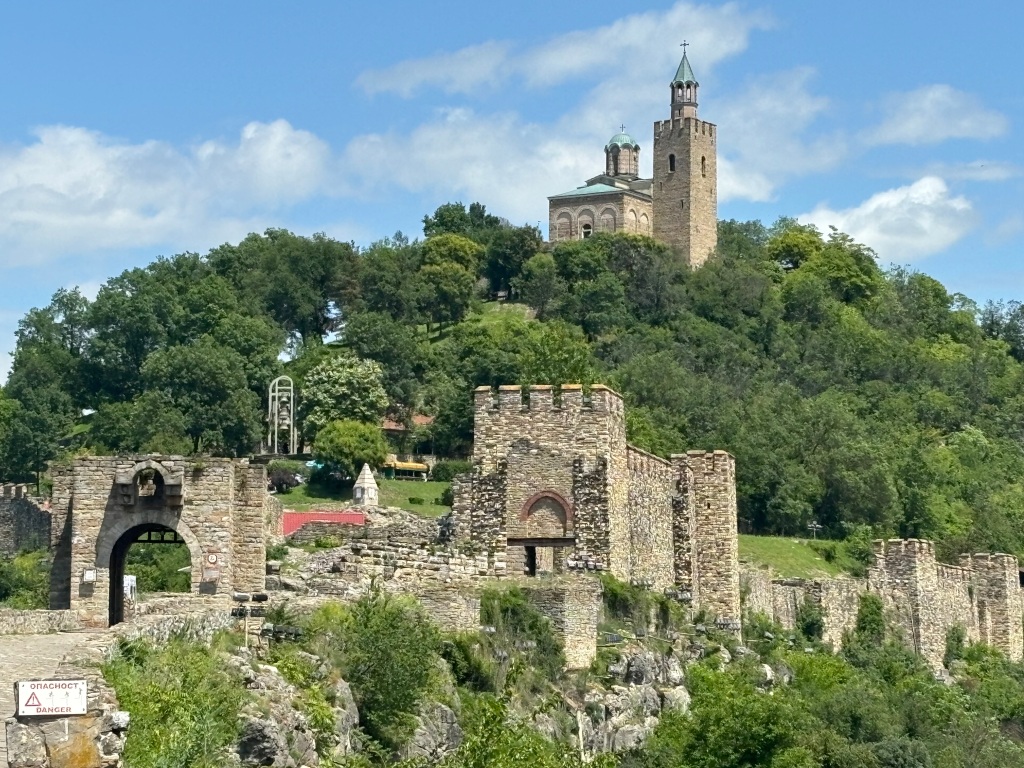

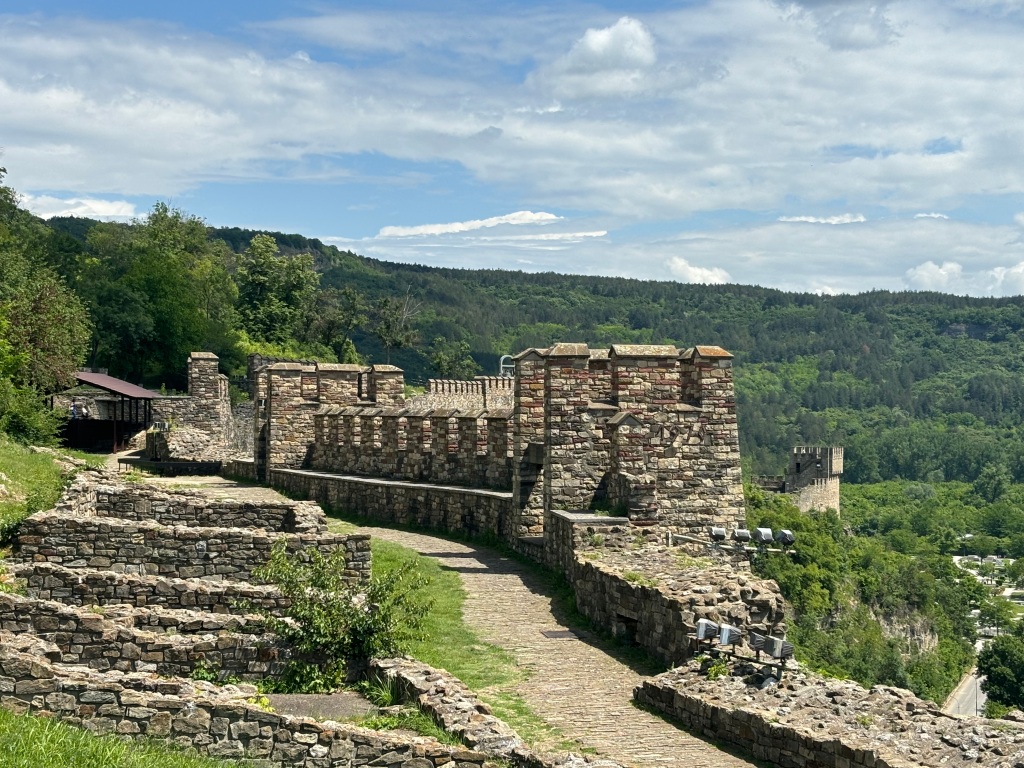


There were the usual inclines and stairs…
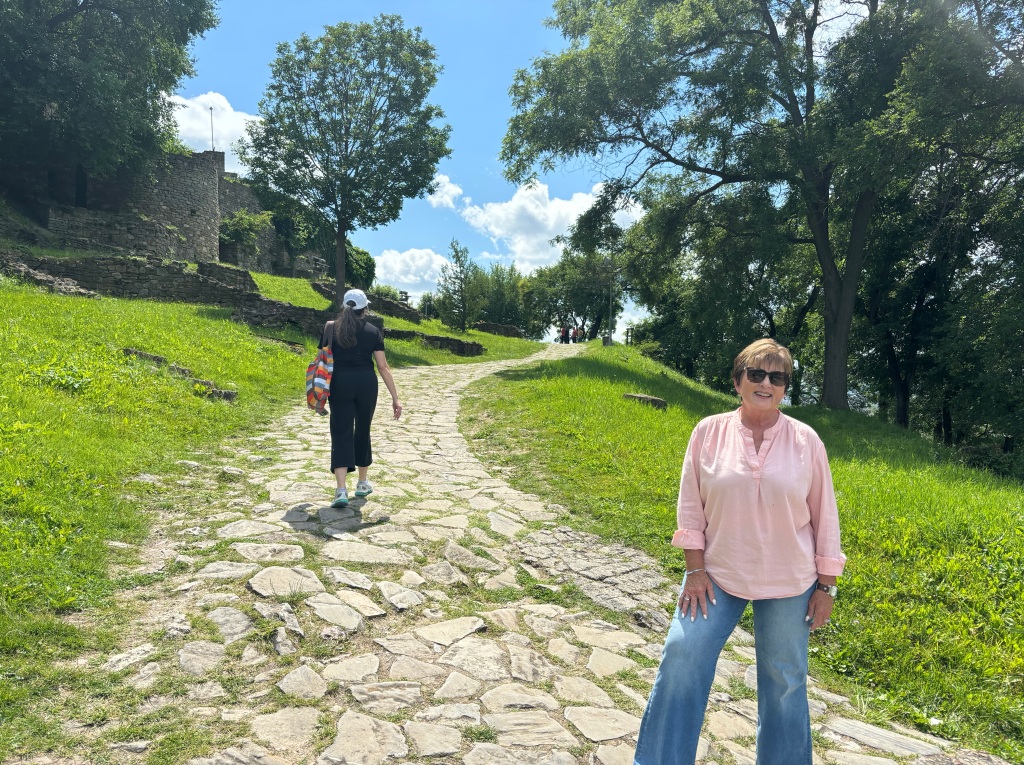
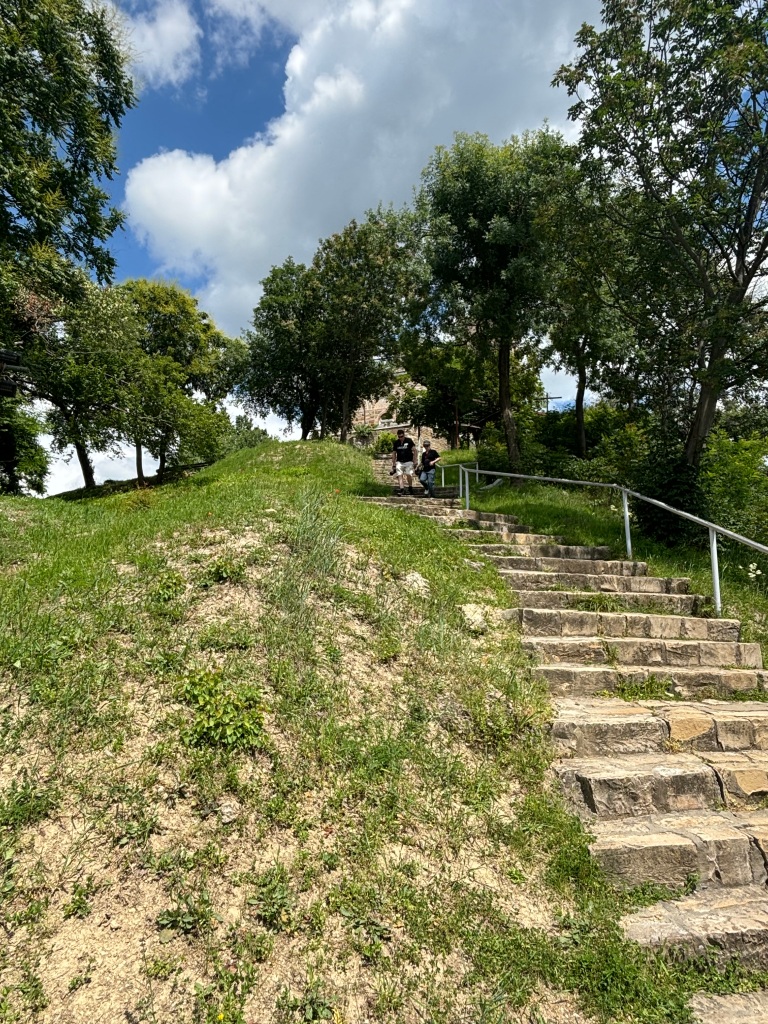

But a beautiful chapel and views were our reward when we reached the top.
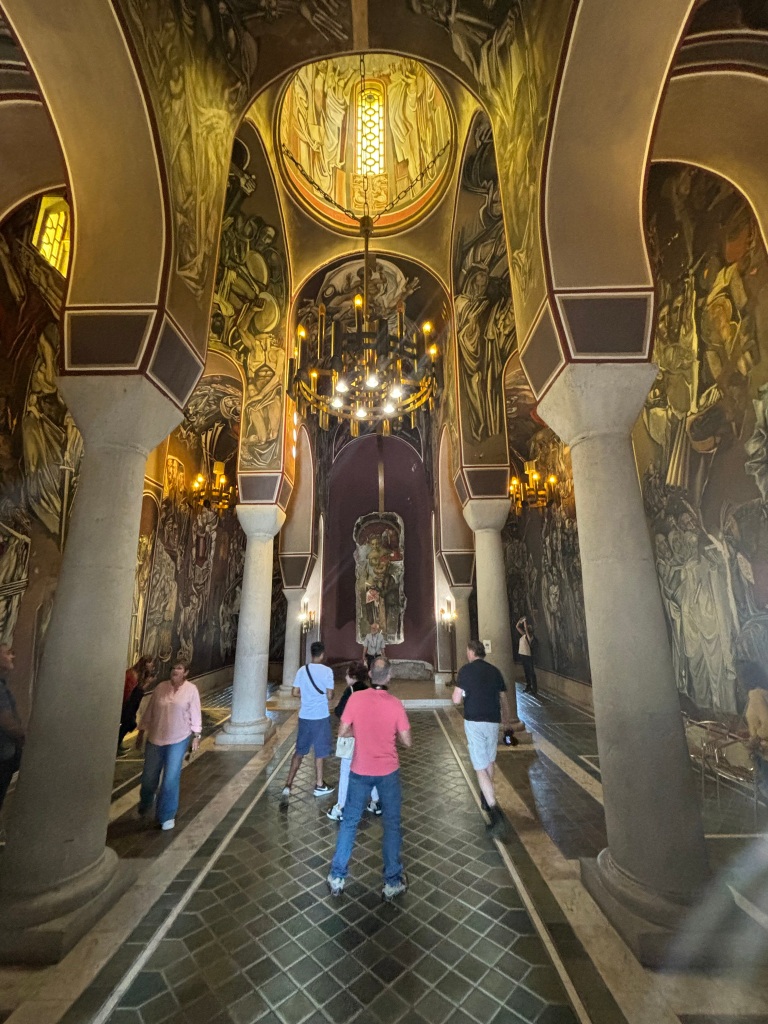
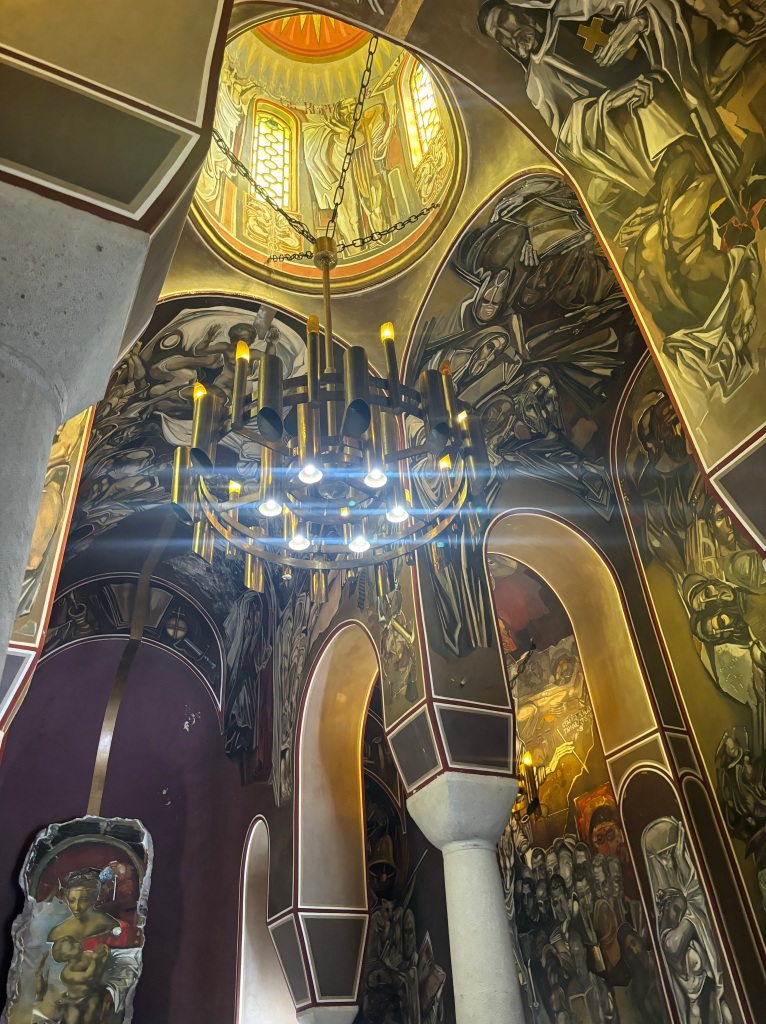

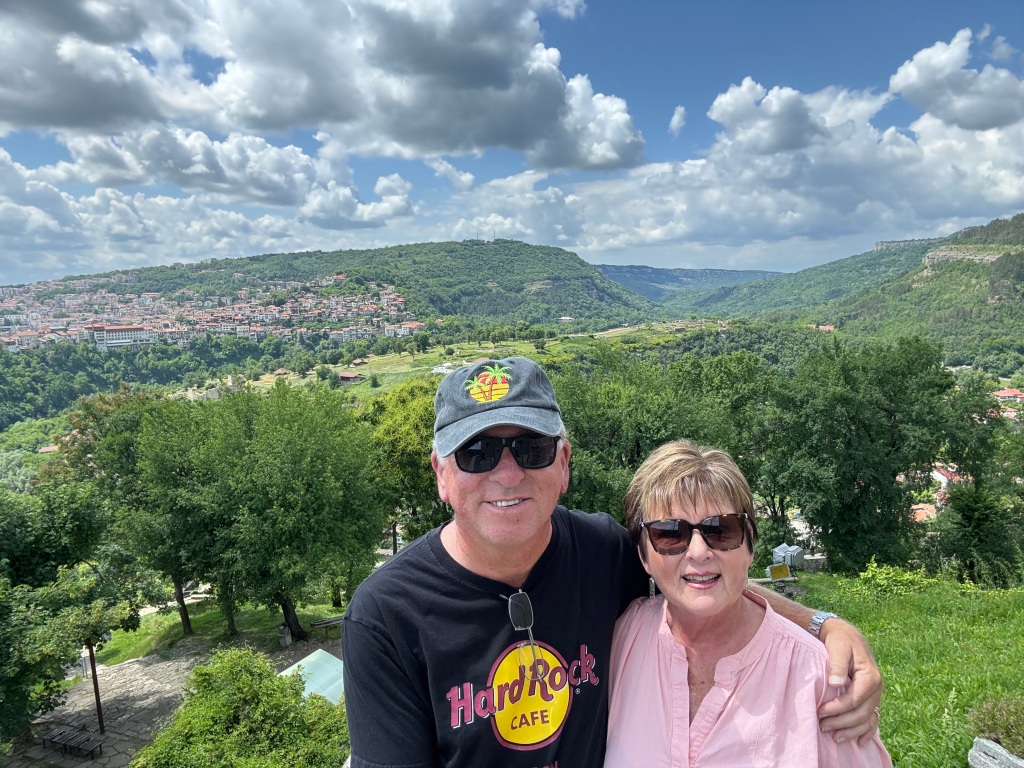
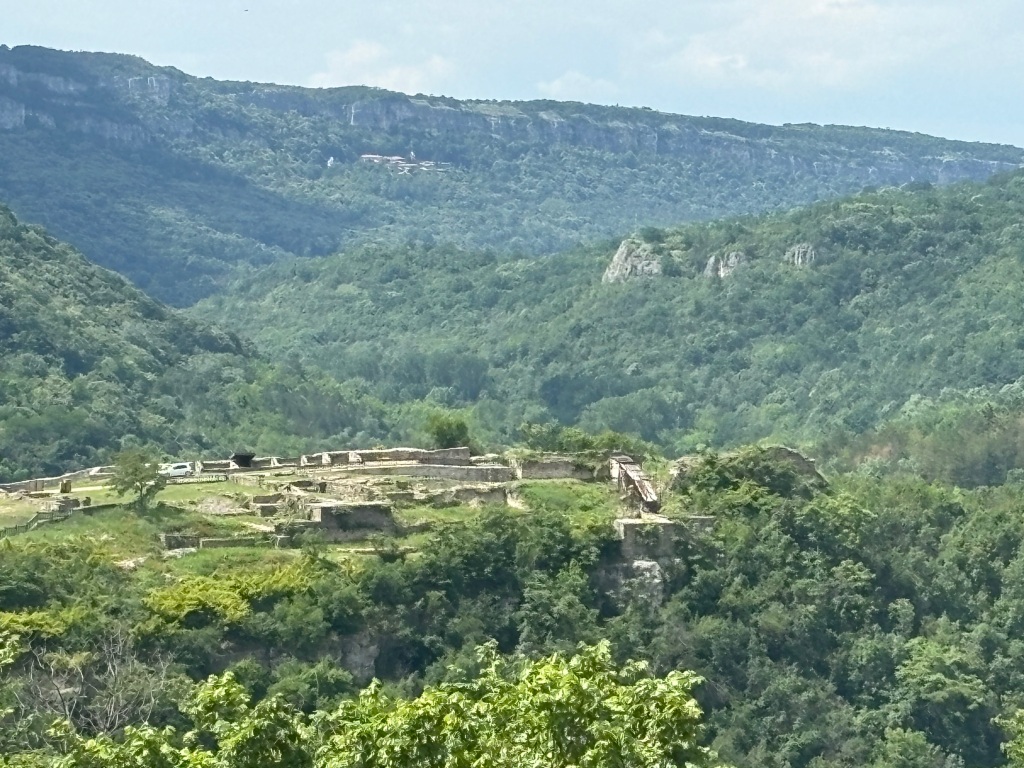
We could have spent an entire day exploring these grounds and all the history they have to offer. We were disappointed to have less than an hour start to finish, but were so glad we took the time. Others on the bus chose to go shopping in an art district – look at all they missed! 😊

Fascinating location. The commentary and the pictures are outstanding!
LikeLike